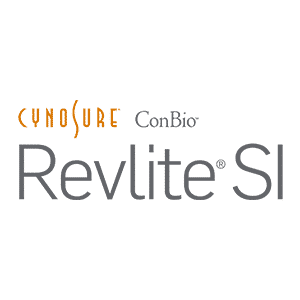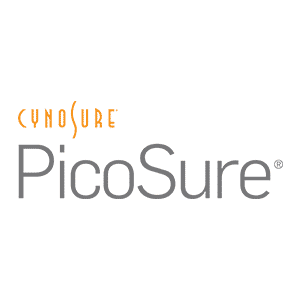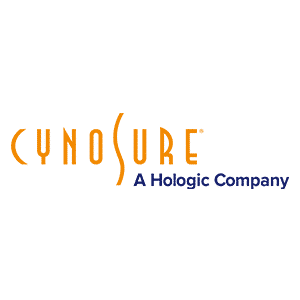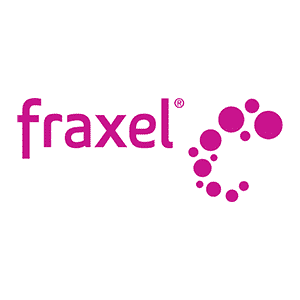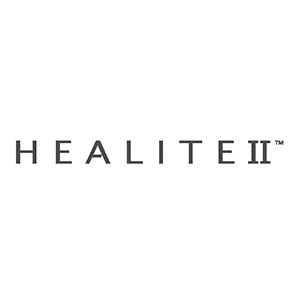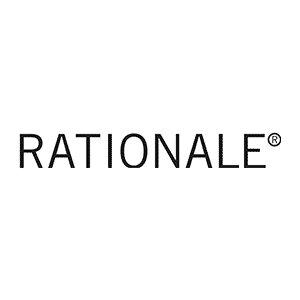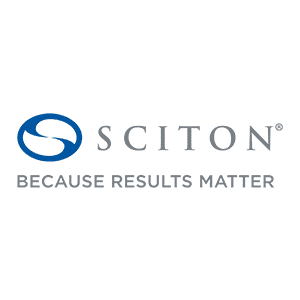Many people search the internet for Before and After photos of treatments and procedures especially cosmetic procedures. For example, if you do a Google search for “Dermal Fillers before and after” 16,000,000 results come up. If you search for Before and Afters for wrinkle injections 45,000,000 results come up!

The reason people search for Before and After images, is presumably to see what results might be able to be achieved from having certain treatments. With so much interest in Before and After photos it is hardly surprising that they are also increasingly being used for marketing purposes by clinics, especially through visual mediums such as Instagram.
However, Before and After photos need to be viewed with some caution. They should only ever be regarded as a guide. Just because you see a photo of someone getting a certain result it does not immediately mean that it is possible or even appropriate for you. At the Collins Cosmetic Clinic, whenever we use Before and After photos either within our clinic or on our website, we believe it is important to point out to patients the limitation of looking at these photos of other people. On our website we place a statement with our Before and After photos that:
“Before and after images are presented purely as a reference point of the results that can be achieved. Everyone is unique and outcomes will vary and realistic expectations need to be discussed on a case by case basis.”
The medical regulatory authority for medical practitioners in Australia (AHPRA) has for some time had concerns over the appropriate use of Before and After photos and the potential of these photos to mislead or even deceive consumers. AHPRA is worried that inappropriate high expectations of a successful outcome through viewing Before and After photos could encourage people to have unnecessary procedures.
For Before and After photos to be as authentic as possible the images should be as similar as possible in content, camera angle, background, framing and exposure, have consistent posture, clothing and makeup with consistent lighting and contrast. Before and After photos should not be accompanied with any review by a patient about the treatment they have received, as this is then regarded as a testimonial, and the use of testimonials contravenes the National Advertising regulations for doctors.
Whenever you look at Before and After photos you are trusting that the images are actual results and have not been altered. The only visible changes on Before and After photos should be from the result of the particular procedure being referenced. This is important as very significant changes can be achieved in a photo through just applying makeup or through using digital software (photoshop) rather than any actual treatment.
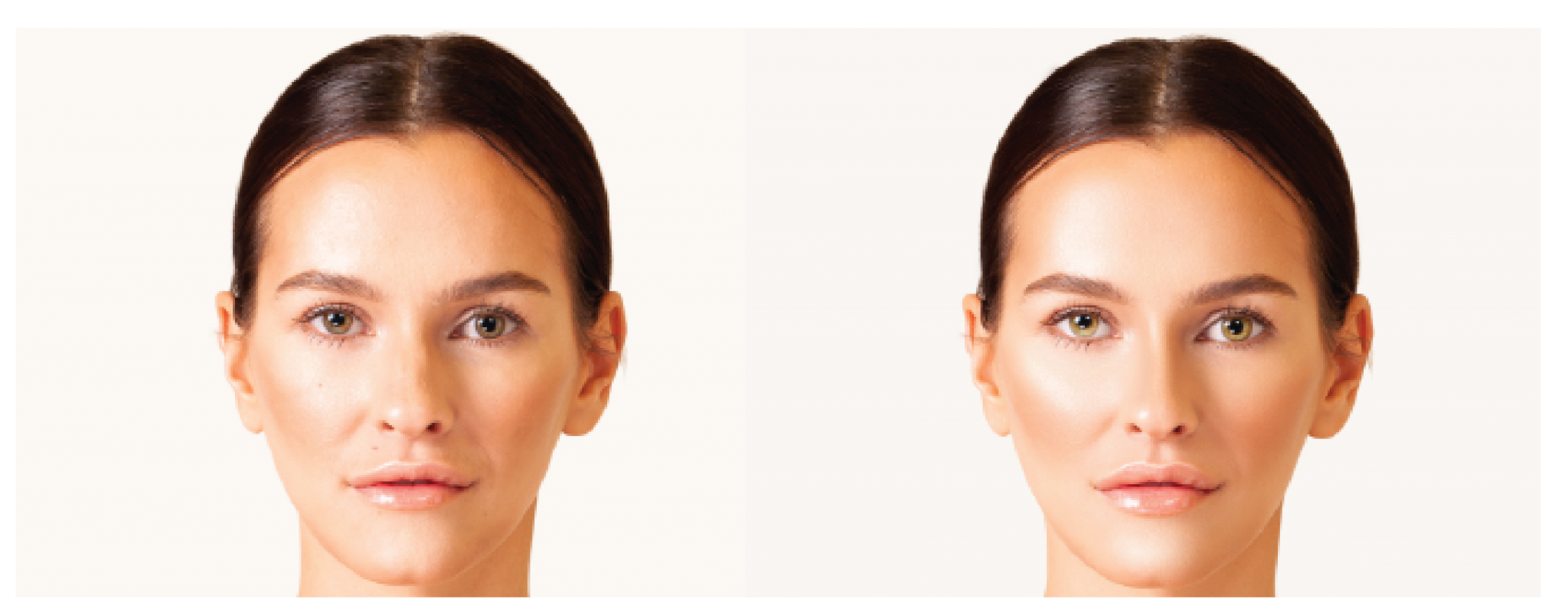
Before and After Digital Photoshop

Before and after makeup

Before and after shaving
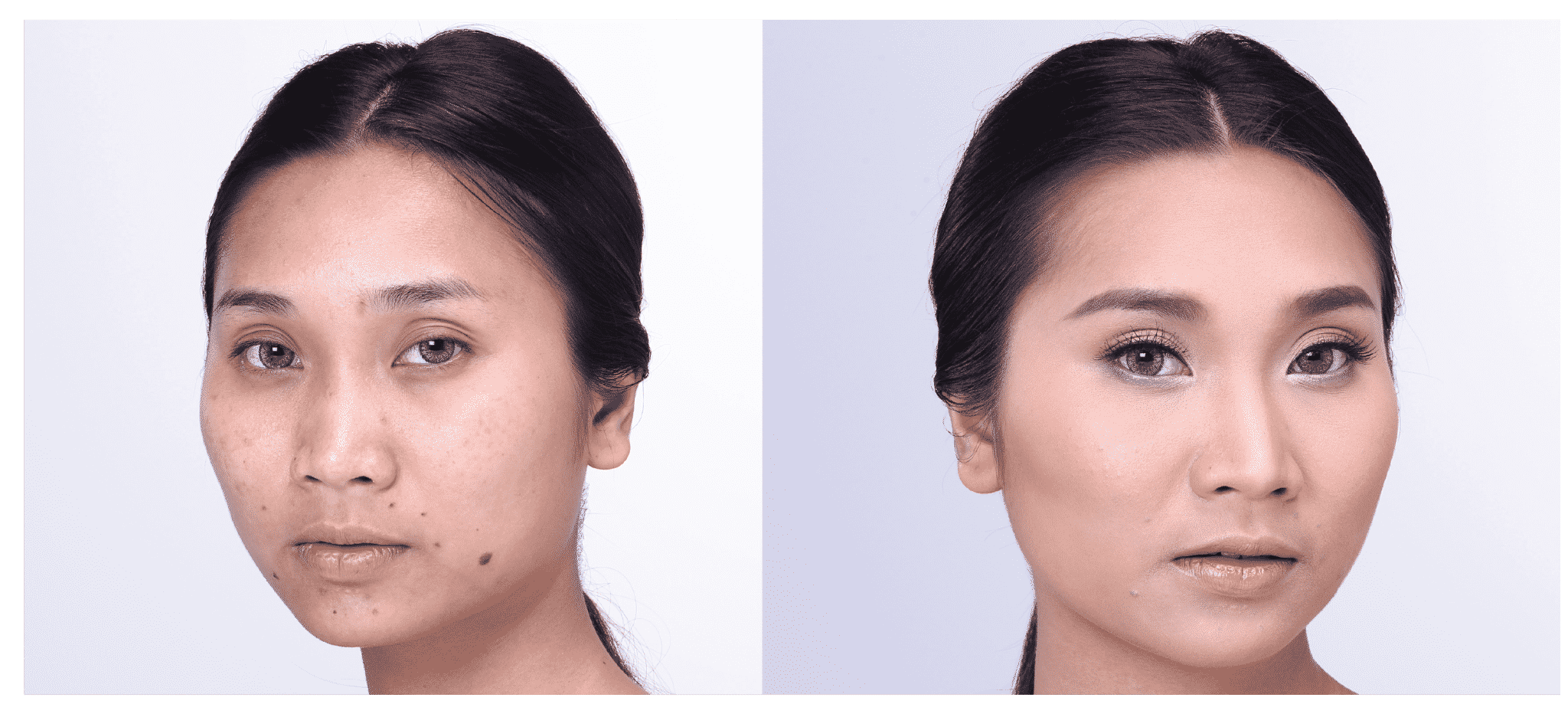
Before and after makeup with different lighting, background and camera angle.
It can be very hard if not impossible to know when looking at a Before and After photo whether it is a real result, so there is a large element of trust in the practitioner posting the photo. Unfortunately, not everyone adheres to regulations and is ethical. Some doctors, especially those marketing more expensive cosmetic surgical procedures, have had their ethics questioned of late. The chair of the Australian Society of Plastic Surgeons ethics committee, Dr Richard Theile, in 2019 wrote an editorial in the Australasian Journal of Plastic Surgery about the worrying trend of deteriorating ethical standards amongst Plastic surgeons. Dr Theile pointed out the increasing number of Plastic Surgeon entrepreneurs in Australia and highlighted how many Plastic Surgeons are using social media for self-promotion driven by greed and ego where the patient has become a commodity to be exploited. Psychology experts such as Professor Nichola Rumsey have accused Plastic Surgeons of using images on Instagram to not only give consumers unrealistic expectations but also to be contributing to people having negative perceptions of body image.
Another issue with Before and After photos is privacy and whether patients have given appropriate consent for images of them to be used on websites and social media. The unauthorised use of patient images has exploded especially on Instagram which is primarily an image driven platform. This is a major concern when facial images which can identify someone, are posted or reposted without consent. Patients have rights to control the use of any photos taken of them including Before and After photos. In Victoria, the Health Records Act (2001) is the most relevant legislation related to treatment records including Before and After photos. This Act protects your health information when it is handled by public and private sector organisations in Victoria and is administered by the Health Complaints Commissioner (HCC). People need to appreciate that any personal information, including photos, taken in a non-medical setting such as a Beauty salon are extremely unlikely to be subject to the same high standards of safety and privacy as in a medical practice. If you have any concerns with the unauthorised use of photos of you then the HCC is the body to contact https://hcc.vic.gov.au/health-records
At the Collins Cosmetic Clinic when we take Before and After photos you as a patient can feel confident that because we are a medical practice they are treated as strictly confidential and part of your medical record. When we take photographs, they are kept within your electronic medical record, in an encrypted file. The safety and privacy of medical records are of paramount importance to us and any photos we take that could identify you will never be used without your consent. When we use images on our website or in posts privacy and confidentiality is our number one priority followed by authenticity. When we use Before and After photos, we primarily use authorised images of actual patients that have been treated within our clinic, as we feel it is important to demonstrate the sort of results we can achieve. Whilst we are quite experienced in taking photos we are not professional photographers so we do also post some copywrite approved stock images taken by professional photographers if we feel these photos have added educational value in demonstrating reasonable expectations.
Whilst there are potential issues and limitations with Before and After photos, they are not just a means of showcasing results. In our clinic they are more importantly a very valuable treatment tool which can help us achieve the best results for each individual patient. The Before image is an important reference point as a baseline of where you are at a point in time before treatment. The After image documents and allows us to monitor your response to treatment. If you as a patient are not getting a great result we want to know why not. We need to understand whether it is just a matter of it being a slower response than expected and might require a few more treatments than usual or whether we will need to change the intensity or dose of treatments. Sometimes, we may need to consider an alternative treatment approach or even have to recalibrate and reassess as to what are realistic expectations that we can achieve in that particular case.
In summary, Before and After images are a very highly searched term by consumers and a highly marketed tool by providers but remember images of another person are no guarantee of the results you can achieve. The most important Before and After photos are your own, as they enable us to monitor your response to treatment and help us achieve the best results for you. At the Collins Cosmetic Clinic we have a longstanding reputation for quality service and as a medical doctor owned and operated clinic we adhere to the highest standards of patient care and privacy including in the use of Before and After photos. If you have any questions about Before and After photos or any of our treatments please feel free to use our contact page contact us ring us 96545720 or email on contact@collinscosmeticclinic.com.au


